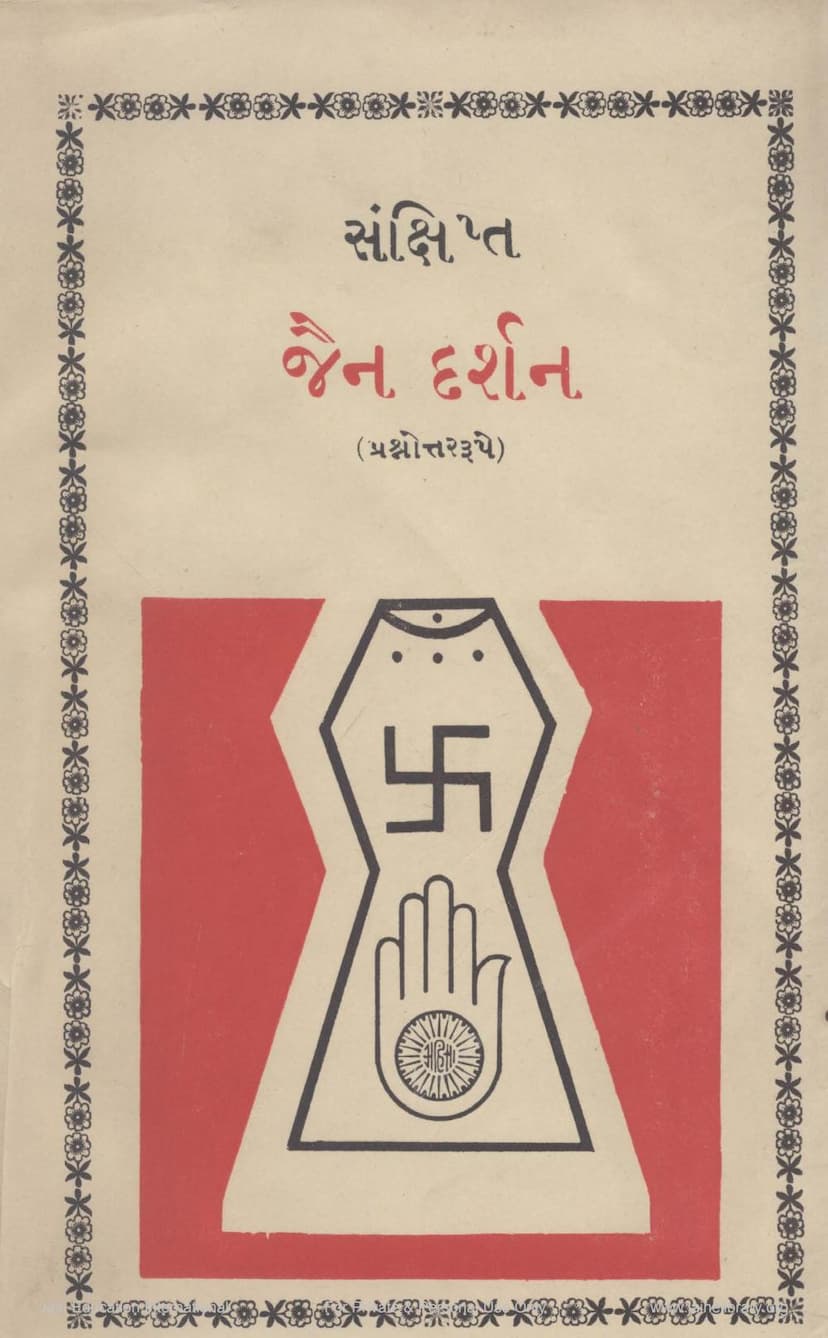Sankshipta Jain Darshan
Added to library: September 2, 2025

Summary
Here's a comprehensive summary of the Jain text "Sankshipta Jain Darshan" by Dineshchandra Joravarmal Modi, based on the provided pages:
Book Title: Sankshipta Jain Darshan (Brief Jain Philosophy) Author: Dineshchandra Joravarmal Modi Publisher: Dineshchandra Joravarmal Modi Format: Question-and-Answer (Prashnottar) format, intended for those seeking primary knowledge of Jainism.
Core Tenets and Philosophy:
The book aims to present a concise overview of Jain philosophy. The initial pages emphasize the completeness, dispassionateness (niragita), truthfulness, and world-welfare orientation (jagat-hita-svita) of Jainism. It asserts that Jainism is unique and unparalleled in its understanding of subjects from infinite perspectives, and that no other philosophy is equivalent to Jain Darshan. The text cites Shri Virchandra, who stated, "There is no philosophy like Jainism in the entire universe; there is no God like Vitaraaga."
Key Themes and Content:
The book is structured as a comprehensive Q&A covering a vast range of Jain concepts. While the provided text doesn't offer the full content of the book, it reveals the breadth of topics addressed:
-
Cosmology and Metaphysics:
- The nature of the world (lok), the universe (aloka), and the structure of the cosmos (description of Adhai Dvipa, Jambudvipa, regions of devas and naraka).
- The concept of six substances (dravya): Jiva (soul), Pudgala (matter), Dharma (principle of motion), Adharma (principle of rest), Akasha (space), and Kala (time).
- The seven tattvas (principles): Jiva, Ajiva, Asrava (influx of karma), Bandha (bondage of karma), Samvara (prevention of influx), Nirjara (shedding of karma), and Moksha (liberation).
- The nature of karma: its bondage (karma bandha), its fruits (karma phala), its intricacies, and its role in the cycle of birth and death. The text includes a section on the "miracle of karma" and the "strangeness of karma," illustrating how actions lead to varied experiences.
- The concept of six lifefodies (kaya) and nine tattvas.
- The distinction between Jiva (soul) and Ajiva (non-soul).
- The explanation of Sankhyata, Asankhyata, and Ananta (number) as used in Jainism.
-
Spiritual Path and Practices:
- Samyak Darshan (Right Faith): Emphasized as the foundation, involving right faith in Dev, Shastra, and Guru, and understanding of Anekantavada. Its importance and manifestation are discussed.
- Samyak Jnana (Right Knowledge): Knowledge of soul and non-soul, understanding of reality. Types of knowledge (mati, shruta, avadhi, manahparyaya, kevala) are explained.
- Samyak Charitra (Right Conduct): The path to liberation through adherence to vows and conduct.
- Tapa (Austerities): Discussed in terms of external (bahya) and internal (antaran) austerities, their types, and the significance of internal purification.
- Vairagya (Dispassion): The detachment from worldly pleasures.
- Sanyama (Restraint): Control over senses and mind.
- Dhyana (Meditation): Its forms, types, and significance for soul purification. The text delves into Arta, Raudra, Dharma, and Shukla Dhyana.
- Vrata (Vows): The five Mahavratas for ascetics and the five Anuvratas and other vows for laypeople (shravaka dharma).
- Nishkama Karma: Performing actions without attachment to results.
-
Key Jain Concepts:
- Anekantavada (Multifaceted reality): The principle of viewing reality from multiple perspectives.
- Syadvada: The doctrine of conditional predication, emphasizing that truth is relative to viewpoint.
- Karma: A central concept explaining the mechanism of action and consequence.
- Soul (Jiva): Its nature, characteristics, and journey through the cycle of rebirth.
- Jiva vs. Pudgala: The fundamental distinction between animate and inanimate substances.
- Moksha (Liberation): The ultimate goal of Jainism, achieved through the destruction of karma and the soul's attainment of its pure, liberated state.
-
Scriptural and Historical Context:
- The text includes a list of reference books, indicating the scholarly basis of the compilation.
- Discussions about different Jain sects (Shvetambara, Digambara) and their varying interpretations on certain practices.
- Mentions of historical figures like Hemchandracharya and Anandhanji, and their contributions.
- The book also addresses other religions (like Christianity), critically analyzing their doctrines from a Jain perspective.
-
Moral and Ethical Teachings:
- The importance of Ahimsa (non-violence) in thought, word, and deed.
- The emphasis on truthfulness, non-stealing, chastity, and non-possession.
- The value of astha (faith), wisdom (viveka), and compassion (daya).
- The teachings on virtues and vices, and their role in spiritual progress.
Author's Intent and Tone:
The compiler, Dineshchandra Joravarmal Modi, presents this work with the intention of providing foundational knowledge to curious souls. He acknowledges that the questions are primarily his own, but the answers are drawn from the words of learned scholars and omniscient beings, meticulously compiled without personal commentary unless indicated in brackets for clarity. The preface to the first edition highlights the author's journey to understanding the superiority of Jain Darshan and his desire to make this knowledge accessible to others. The subsequent editions reflect the book's popularity and ongoing efforts to refine its content. The author expresses humility and emphasizes that his personal contribution is minimal, the credit belonging to the teachings of the enlightened ones.
Overall Impression:
"Sankshipta Jain Darshan" appears to be a valuable resource for beginners to grasp the fundamental principles of Jainism in a structured and accessible Q&A format. It covers a wide spectrum of topics, from the basic nature of reality to complex spiritual concepts and practical ethical guidelines. The dedication and compilation effort behind the book are evident, aiming to serve the spiritual edification of its readers.